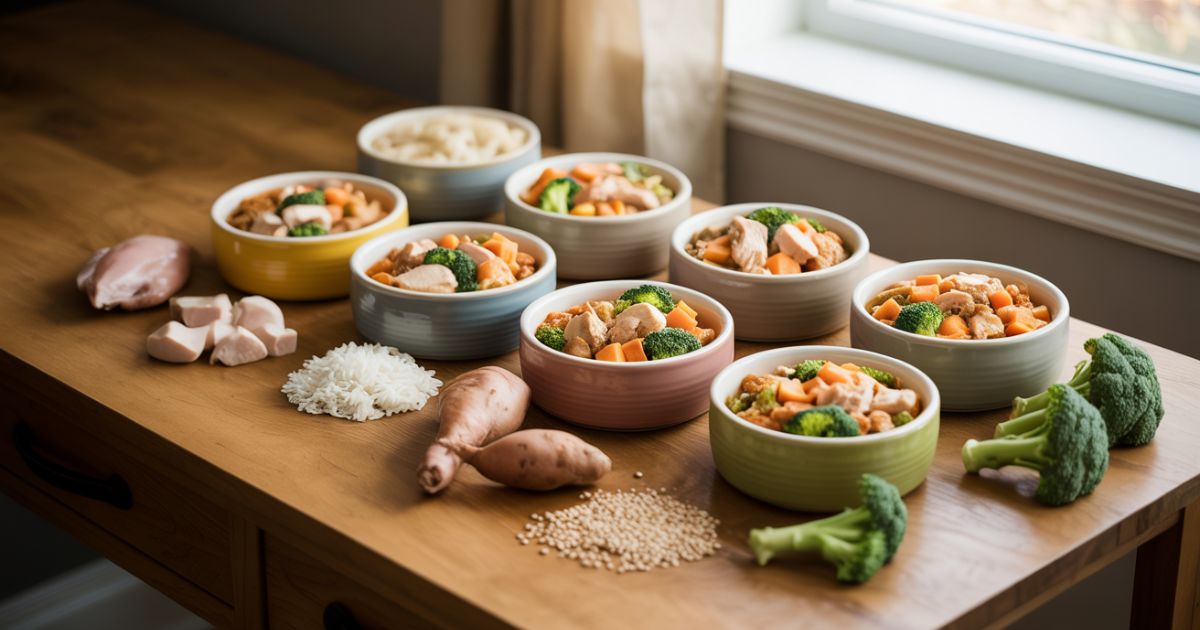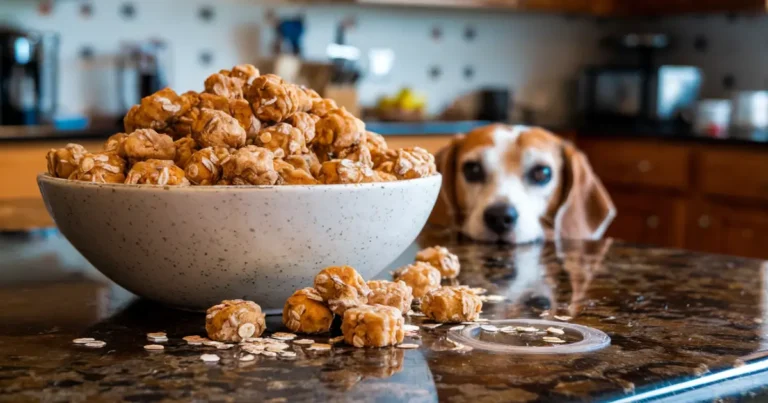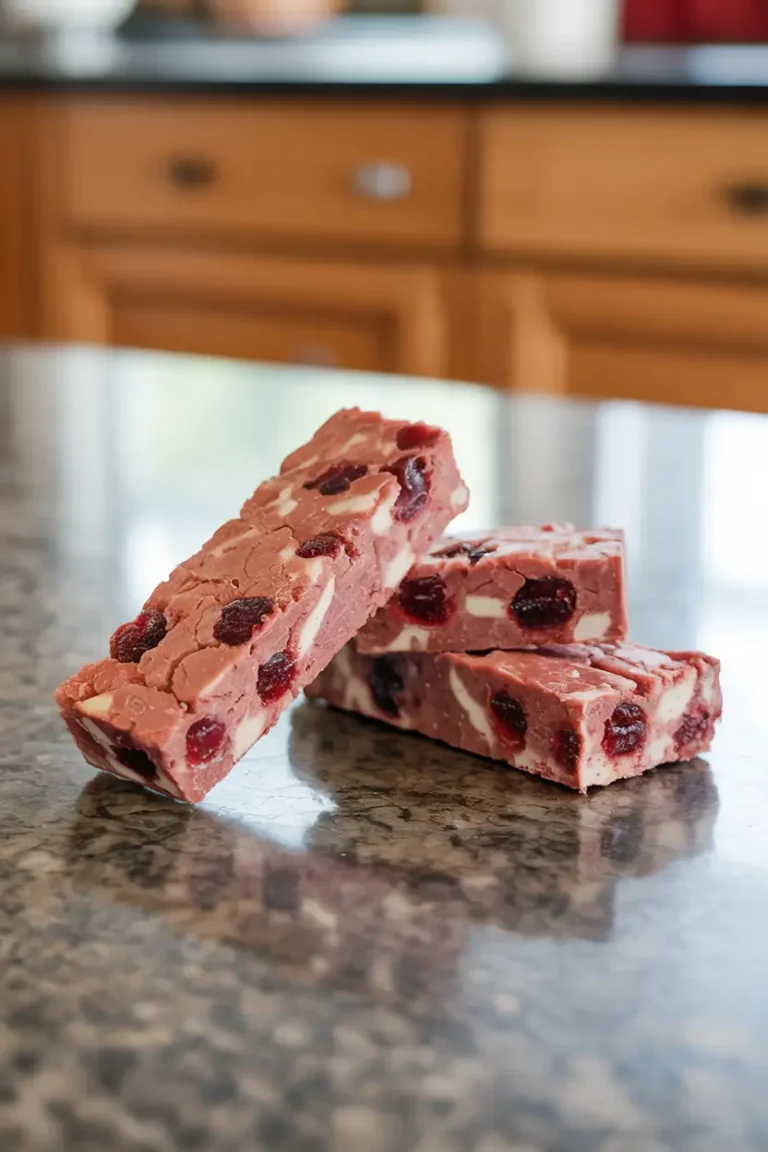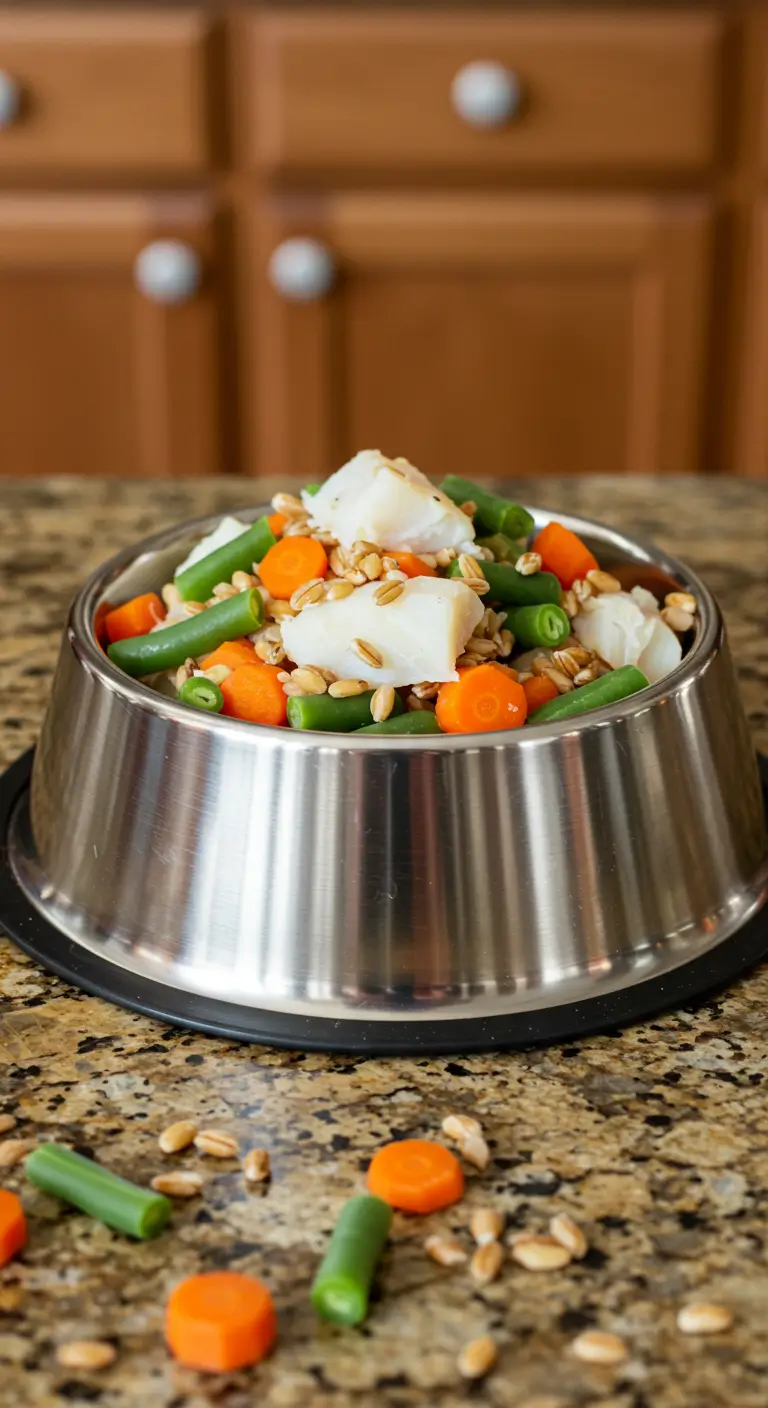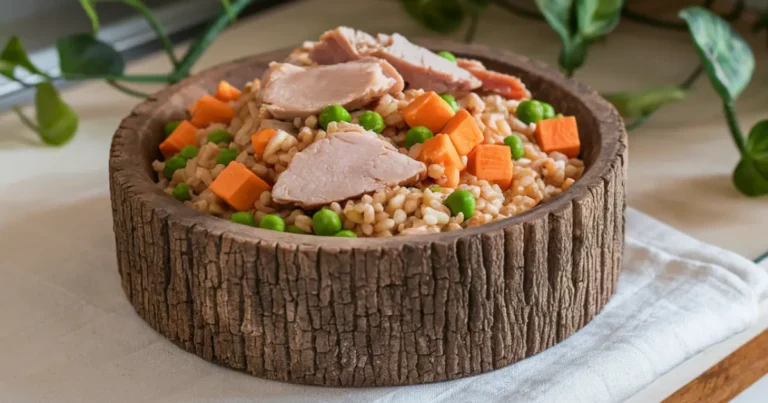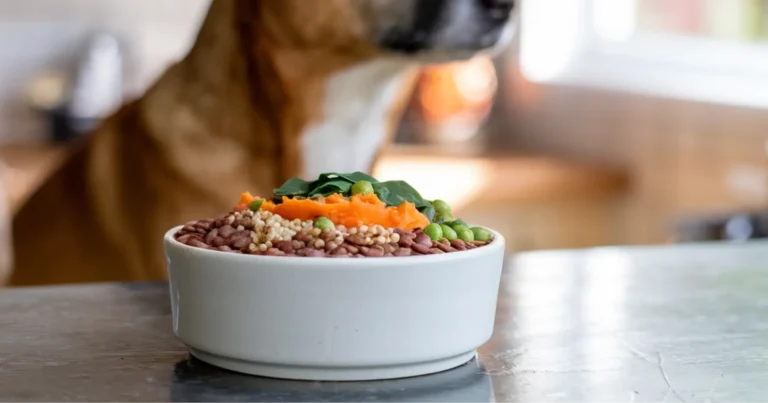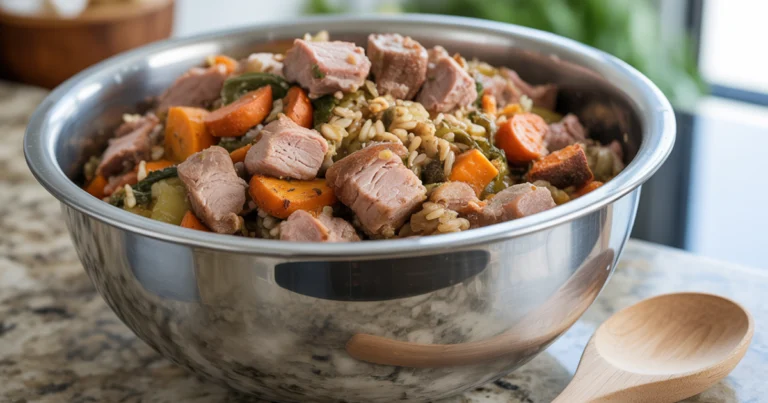7 Healthy Chicken Recipes for Dogs That Boost Vitality
As a dog owner, providing nutritious, homemade meals can significantly impact your pet’s health and happiness. Among the various protein options available, chicken stands out as a versatile, accessible, and nutrient-rich choice for creating balanced dog food at home. This comprehensive guide explores everything you need to know about chicken recipes for dogs, from selection and preparation to complete, vet-approved meal ideas that your furry friend will love. Whether you’re new to preparing chicken recipes for dog food or looking to expand your repertoire, this guide will help you create nutritious meals for your canine companion.
Table of Contents
Benefits of Homemade Chicken Recipes for Dogs
Creating homemade chicken recipes for dog food offers numerous advantages over commercial alternatives. When you prepare meals yourself, you gain complete control over the ingredients, ensuring your dog receives optimal nutrition without unnecessary fillers or preservatives. This includes learning specialized techniques like how to cook chicken livers for dogs to provide nutrient-dense organ meats that support overall health.
Nutritional Benefits of Chicken:
- Lean Protein Source: Chicken provides essential amino acids that support muscle development and maintenance.
- Highly Digestible: Most dogs can easily digest properly cooked chicken, making it suitable for sensitive stomachs.
- Rich in B Vitamins: Chicken contains niacin, vitamin B6, and vitamin B12, which support energy metabolism and nervous system function.
- Contains Minerals: Provides phosphorus, selenium, and small amounts of iron that contribute to overall health.
Beyond the nutritional advantages, preparing homemade chicken meals allows you to customize recipes based on your dog’s specific needs, preferences, and any dietary restrictions they might have.
Essential Kitchen Tools for Cooking Chicken for Dogs
Before diving into chicken recipes for dogs, ensure you have these basic tools on hand:
| Tool | Purpose | Recommendation |
|---|---|---|
| Digital Food Scale | Accurate measurement of ingredients | Any scale with 1g precision |
| Meat Thermometer | Ensuring chicken reaches safe temperature (165°F) | Instant-read digital thermometer |
| Food Processor | Ensuring chicken reaches a safe temperature (165°F) | Medium-sized processor with multiple blades |
| Storage Containers | Proper food storage and portion control | Glass containers with airtight lids |
| Sharp Knife | Safe and efficient meat preparation | 8-inch chef’s knife |
| Large Pot | Boiling or poaching chicken | 6-8 quart stainless steel pot |
With these tools ready, you’ll be well-equipped to prepare nutritious chicken-based meals for your dog safely and efficiently.
Chicken Selection Guidelines for Canine Meals
Selecting the right chicken is crucial for creating nutritious dog food. Follow these guidelines when shopping:
- Choose Organic When Possible: Organic chicken typically contains fewer antibiotics and hormones.
- Consider Different Cuts:
- Boneless, Skinless Chicken Breast: Leanest option, ideal for dogs that need weight management.
- Chicken Thighs: Higher fat content, good for active dogs needing more calories.
- Ground Chicken: Easy to portion and mix with other ingredients.
- Whole Chicken: Economical option that provides various nutrients from different parts.
- Chicken Livers: Understanding how to cook chicken livers for dogs properly is essential, as they’re incredibly nutritious but should be limited to no more than 5-10% of the total diet due to their high vitamin A content.
- Fresh vs. Frozen: Both are acceptable, though fresh is easier to handle and prepare.
- Avoid Seasoned Options: Never use pre-marinated or seasoned chicken that may contain ingredients harmful to dogs.
Don’t forget that chicken bones can splinter and cause major health hazards for dogs. Always completely debone chicken before including it in your pet’s food.
Cooking Chicken for Dogs: Safe Preparation Methods
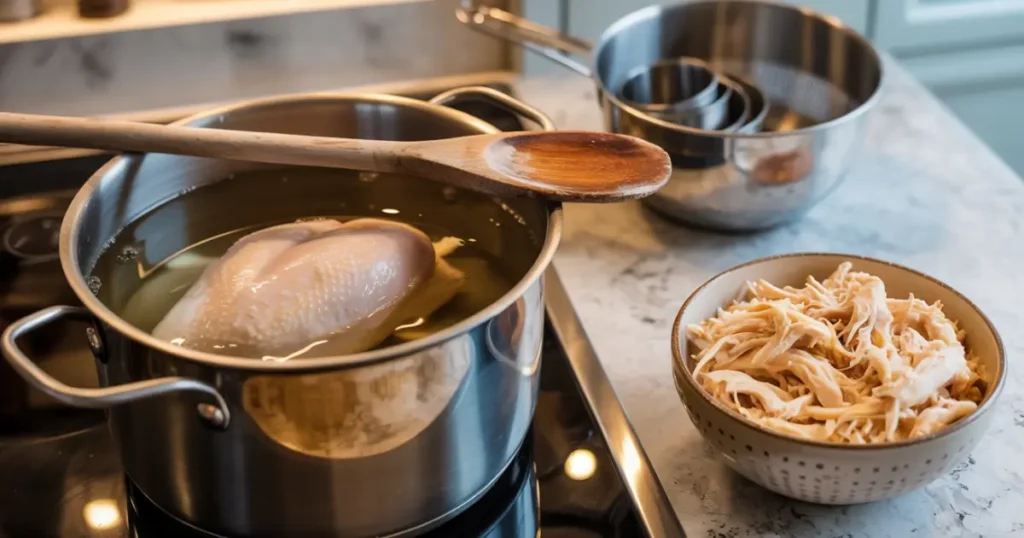
Properly cooking chicken for dogs is essential for both safety and nutrition. Learning how to cook chicken for dogs properly ensures that your homemade meals are both safe and nutritious. Here are the most effective methods:
Boiling Method:
- Place chicken pieces in a large pot.
- Cover completely with water.
- Reduce to a simmer after bringing to a boil.
- Cook until internal temperature reaches 165°F (typically 15-20 minutes for boneless pieces).
- Allow to cool before shredding or chopping.
Baking Method:
- Preheat oven to 350°F.
- Place chicken on a parchment-lined baking sheet.
- Bake until internal temperature reaches 165°F (about 20-30 minutes, depending on thickness).
- Let cool before handling.
Pressure Cooking Method:
- Place chicken in a pressure cooker with 1 cup of water.
- For fresh food, cook on high pressure for 8–10 minutes; for frozen food, cook for 12–15 minutes.
- Allow natural pressure release before opening.
Important Safety Tips:
- Never serve undercooked chicken to your dog.
- Remove all bones before serving.
- Avoid using oils, seasonings, or spices that may be harmful to dogs.
- Let the cooked chicken cool completely before mixing with other ingredients.
7 Nutritious Chicken Recipes for Dogs
Here are seven balanced chicken recipes for dogs that provide complete nutrition. These chicken recipes for dog food are designed to be nutritionally balanced while remaining appetizing for your pet. Before trying any of these recipes, you may want to learn how to cook chicken for dogs: 5 easy steps for delicious meals to master the basics of safe preparation.
1. Basic Chicken and Brown Rice
Ingredients:
- 2 lbs boneless, skinless chicken breast
- 1 cup brown rice
- 2 cups mixed vegetables (carrots, green beans, peas)
- 4 cups water
- 1 tablespoon olive oil
Instructions:
- Rinse rice thoroughly and add to a large pot with water.
- After bringing to a boil, lower the heat and simmer for 15 minutes.
- After adding the chicken breast, cook it for another 15 minutes.
- Add vegetables and cook until rice is tender and chicken reaches 165°F.
- Remove chicken, let cool, then shred into small pieces.
- Mix all ingredients together and allow to cool completely before serving.
This basic recipe is perfect for beginners looking to create simple chicken recipes for dog food. For a more detailed approach to this classic combination, check out How to Make Chicken and Rice for Dogs at Home Safely.
2. Chicken and Sweet Potato Mash
Ingredients:
- 1 lb ground chicken
- 2 medium sweet potatoes
- 1 cup green peas
- 1/2 cup plain yogurt (no xylitol)
- 1 tablespoon ground flaxseed
Instructions:
- After peeling and cubing the sweet potatoes, boil them for 15 minutes or until they are tender.
- In a separate pan, cook ground chicken until no longer pink.
- Mash sweet potatoes and mix with cooked chicken.
- Add peas, yogurt, and flaxseed, mixing thoroughly.
- Cool completely before serving.
3. Chicken Vegetable Stew
Ingredients:
- 1.5 lbs chicken thighs, boneless and skinless
- 1 cup carrots, diced
- 1 cup green beans, chopped
- 1/2 cup butternut squash, cubed
- 1 cup brown rice
- 6 cups of water
- 2 tablespoons coconut oil
Instructions:
- In a large pot, bring water to a boil.
- Add rice and cook for 10 minutes.
- Add chicken thighs and vegetables.
- Reduce heat and simmer for 25 minutes until chicken is fully cooked.
- Remove chicken, shred into small pieces, and return to pot.
- Add coconut oil and stir thoroughly.
- Allow to cool completely before serving.
4. Chicken Liver and Rice Formula
Ingredients:
- 1 lb chicken breast
- 1/2 lb chicken livers
- 1 cup white rice
- 1 cup spinach, finely chopped
- 1/2 cup carrots, grated
- 1 tablespoon calcium supplement (consult your vet for the appropriate product)
Instructions:
- Learning how to cook chicken livers for dogs is simple: rinse livers thoroughly and boil in plain water for 10-15 minutes until fully cooked.
- Boil chicken breast separately until reaching 165°F internal temperature.
- Cook rice according to package instructions.
- Chop cooked chicken and livers into small pieces.
- Mix all ingredients together, including the calcium supplement.
- Cool completely before serving.
5. Chicken and Quinoa Power Bowl
Ingredients:
- 1.5 lbs boneless chicken thighs
- 1 cup quinoa
- 1 cup pumpkin puree (plain, no spices)
- 1/2 cup blueberries
- 1 tablespoon coconut oil
- 1 teaspoon eggshell powder or calcium supplement
Instructions:
- Cook quinoa according to package instructions.
- Boil chicken thighs until reaching 165°F internal temperature.
- Shred chicken into small pieces.
- Mix all ingredients together thoroughly.
- Cool completely before serving.
6. Chicken and Oats Breakfast Bowl
Ingredients:
- 1 lb ground chicken
- 1 cup rolled oats
- 2 eggs
- 1/4 cup plain yogurt
- 1 apple, cored and diced
- 1 tablespoon ground flaxseed
Instructions:
- Cook ground chicken in a pan until no longer pink.
- In a separate pot, cook oats according to package instructions.
- Beat eggs and cook as a simple scramble.
- Mix all ingredients together.
- Cool completely before serving.
7. Cooling Chicken and Cucumber Meal
Ingredients:
- 2 lbs chicken breast
- 1 cup white rice
- 1 cucumber, diced
- 1/2 cup plain yogurt
- 1 tablespoon coconut oil
- 1/4 cup fresh parsley, chopped
Instructions:
- Boil chicken until fully cooked, then shred into small pieces.
- Cook rice according to package instructions.
- Mix chicken and rice with the remaining ingredients.
- Refrigerate and serve cool, especially in warmer months.
Portioning and Storage Tips for Homemade Dog Food
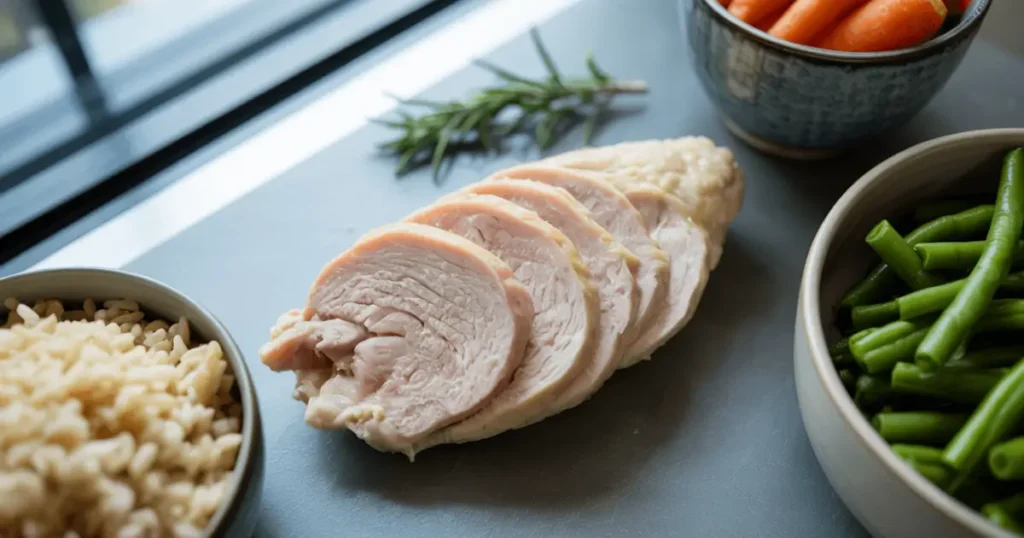
Proper portioning and storage ensure your homemade chicken recipes for dog food remain fresh and nutritious:
Portion Guidelines:
- Small dogs (under 20 lbs): 1/2 to 1 cup daily, divided into two meals
- Medium dogs (20-50 lbs): 1 to 2 cups daily, divided into two meals
- Large dogs (50-100 lbs): 2 to 4 cups daily, divided into two meals
These guidelines are approximate; consult your veterinarian for personalized feeding recommendations based on your dog’s age, weight, activity level, and health status.
Storage Best Practices:
- Refrigerate portions to be used within 3-4 days in airtight containers.
- For up to 3 months, freeze individual portions in freezer-safe containers.
- Before serving, let frozen portions thaw overnight in the fridge.
- Discard any food left uneaten after 20 minutes.
- Never leave homemade dog food at room temperature for more than 2 hours.
Balancing Nutrition in Chicken-Based Dog Meals
While chicken provides excellent protein, creating nutritionally complete meals requires additional ingredients to ensure balanced nutrition. When developing chicken recipes for dog food, consider these essential components for optimal health:
Essential Nutrient Components:
- Protein (Chicken): 40-50% of the meal
- Complex Carbohydrates: 30-40% (rice, sweet potatoes, quinoa, oats)
- Vegetables/Fruits: 10-20% (carrots, peas, spinach, blueberries)
- Healthy Fats: 5-10% (olive oil, coconut oil, flaxseed)
- Supplements: As needed (calcium, multivitamins – consult your vet)
Important Nutritional Considerations:
- Calcium-Phosphorus Balance: Chicken is high in phosphorus but low in calcium. Adding a calcium supplement or eggshell powder helps maintain the proper ratio.
- Omega Fatty Acids: Include sources like flaxseed or fish oil for skin and coat health.
- Vitamins and Minerals: A variety of vegetables ensures adequate vitamin intake.
Before making significant changes to your dog’s diet, consult with your veterinarian to ensure your homemade recipes meet all of your dog’s nutritional requirements.
Transitioning Your Dog to Homemade Chicken Meals
When introducing homemade chicken recipes for dog food, a gradual transition helps prevent digestive upset:
Week 1: 75% current food + 25% homemade chicken recipe Week 2: 50% current food + 50% homemade chicken recipe Week 3: 25% current food + 75% homemade chicken recipe Week 4: 100% homemade chicken recipe
During this transition, monitor your dog closely for:
- Changes in stool consistency
- Energy levels
- Coat condition
- Overall appetite
If you notice any concerning symptoms like vomiting, diarrhea, or reduced appetite, slow down the transition or consult your veterinarian.
Key Takeaways
- Quality Matters: Choose high-quality chicken and ingredients for optimal nutrition.
- Proper Cooking: Always cook chicken thoroughly to an internal temperature of 165°F.
- Balance is Essential: Ensure recipes include protein, carbohydrates, vegetables, and necessary supplements.
- Portion Control: Feed appropriate amounts based on your dog’s size, age, and activity level.
- Safe Storage: Store homemade dog food properly to maintain freshness and prevent spoilage.
- Veterinary Guidance: Consult your veterinarian before making major dietary changes.
- Transition Gradually: Introduce homemade chicken recipes slowly to prevent digestive issues.
Conclusion
Preparing homemade chicken recipes for dogs allows you to provide nutritious, delicious meals tailored to your pet’s specific needs. By learning how to cook chicken for dogs properly and following balanced chicken recipes for dog food, you can enhance your dog’s health and happiness through homemade cooking. The chicken recipes for dogs shared in this guide offer a solid foundation for creating varied, nutritious meals that your canine companion will enjoy.
Remember that each dog is unique, with individual nutritional needs and preferences. Pay attention to how your dog responds to different recipes, and don’t hesitate to make adjustments with professional guidance. With proper care and attention to quality, homemade chicken-based meals can be a wonderful way to nourish your furry family member.
Frequently Asked Questions
Can I use rotisserie chicken for homemade dog food?
While convenient, store-bought rotisserie chicken often contains seasonings, salt, and other ingredients that may be harmful to dogs. When creating chicken recipes for dogs, it’s best to use plain, unseasoned chicken that you’ve cooked yourself to control exactly what goes into your dog’s food.
How much chicken should I feed my dog daily?
As a general guideline, dogs need approximately 1 gram of protein per pound of body weight daily. For a 50-pound dog, this means about 50 grams of protein, which equals roughly 7-8 ounces of cooked chicken. However, chicken should only be part of a balanced diet, not the entire meal.
Do I need to add supplements to homemade chicken meals?
Yes, most homemade dog food requires supplementation to ensure complete nutrition. Calcium is particularly important when feeding a diet high in meat. Consult with your veterinarian about appropriate supplements for your dog’s specific needs.
Can puppies eat homemade chicken recipes?
Puppies have different nutritional requirements from adult dogs and need specific nutrient ratios for proper growth. If you want to feed your puppy homemade food, consult with a veterinary nutritionist to create recipes specifically formulated for growth and development.
How do I know if my homemade chicken recipe is nutritionally complete?
The best way to ensure nutritional completeness is to have your recipe evaluated by a veterinary nutritionist. They can analyze the nutrient content and recommend adjustments or supplements to meet your dog’s specific requirements.

